In Morocco, henna is a popular type of body art that is entrenched in cultural history. It has been used for generations to make beautiful skin decorations that frequently represent good luck, wealth, and fertility. To create beautiful designs on the hands, arms, legs, and feet, the henna artist utilizes a natural extract from the henna plant.
In this article, we will look at some of the most popular Moroccan henna designs and customs. Henna is a traditional Moroccan tradition that has been handed down through centuries. It is said to be one of the world’s earliest types of body art, having been utilized as a form of ornamentation from at least 7,000 BC!
It is still a popular method of self-expression among Moroccans today. There are several ways to integrate henna into your style, ranging from temporary tattoos to detailed patterns for special events such as weddings and festivals. Continue reading to find out more about Moroccan henna styles and customs!
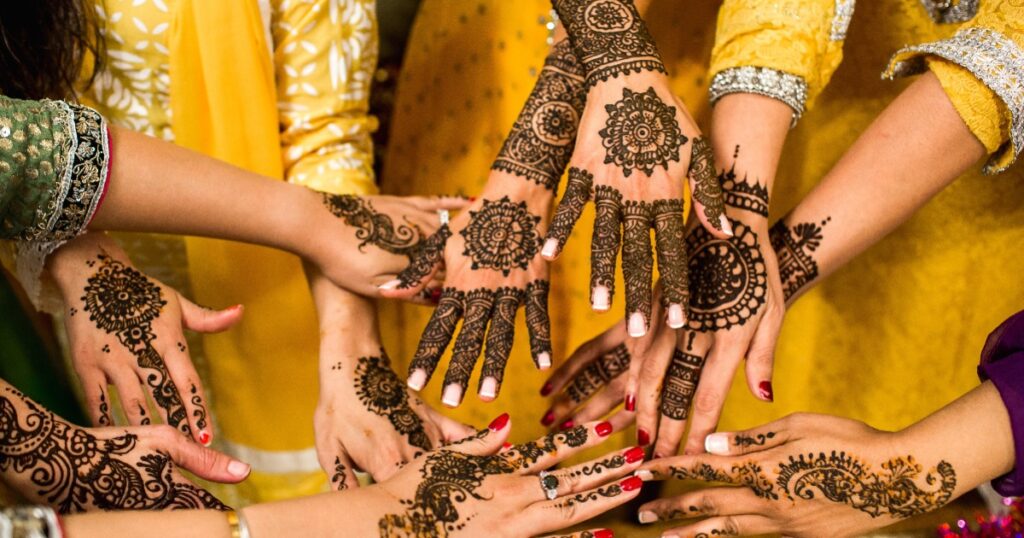
What Exactly Is Henna?
Henna is a versatile plant-based dye that has been used for ages as part of cultural traditions in the Middle East and North Africa.
It is manufactured from the dried leaves of the Lawsonia inermis plant, which are then processed into a powder.
It forms a paste when combined with water or lemon juice and may be used on the skin, hair, or nails.
This paste leaves a reddish-orange stain on the skin, which is frequently associated with excitement and celebration.
Henna is popular for weddings, special celebrations, body art, cosmetic treatments, and other purposes.
It also has spiritual importance in several cultures, with many thinking that using it brings good fortune and protects against harmful energies.
Mehndi Henna Tattoos
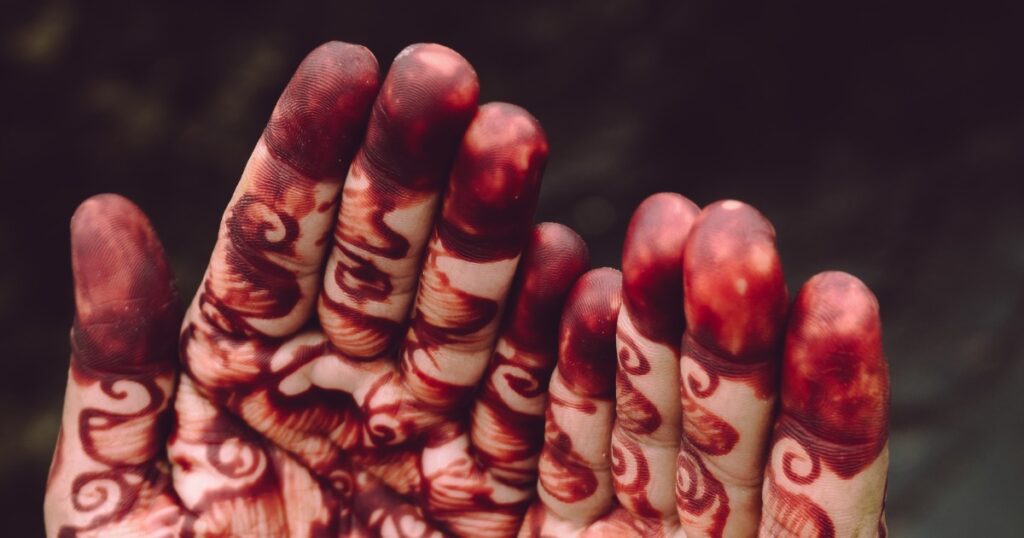
For generations, henna tattoos, also known as mehndi, have been a part of Moroccan culture.
The art of henna includes creating elaborate designs on the skin using natural colors derived from the henna plant’s leaves and twigs.
These patterns are said to provide good luck, riches, and illness prevention.
It is traditionally used for important events like as weddings, religious festivals, and other festivities.
Simple geometric forms to intricate flower designs that span the full body may be used in the design.
Henna tattoos may last anywhere from one to four weeks, depending on how well they are cared for.
Although this kind of body art is mostly utilized in Morocco, it has gained popularity across the globe owing to its stunning patterns and meaning.
In Morocco, Henna
Moroccan culture and custom include the use of henna. It’s a kind of body art that has been utilized for ages to embellish brides’ hands and feet during their wedding ceremonies.
The henna paste itself is often formed from crushed henna plant leaves that have been dried and processed into a fine powder. Henna is also widely utilized as an alternative to tattoos in Morocco, with individuals adorning their bodies with elaborate patterns that are both beautiful and meaningful.
It is also used to fend against bad luck or sickness, as well as to bring good luck in business or love. In certain regions of Morocco, henna is even seen to be a protective sign, keeping bad spirits away from the wearer.
Henna, whether for beauty or protection, is still an essential element of Moroccan culture today.
Henna Instruments
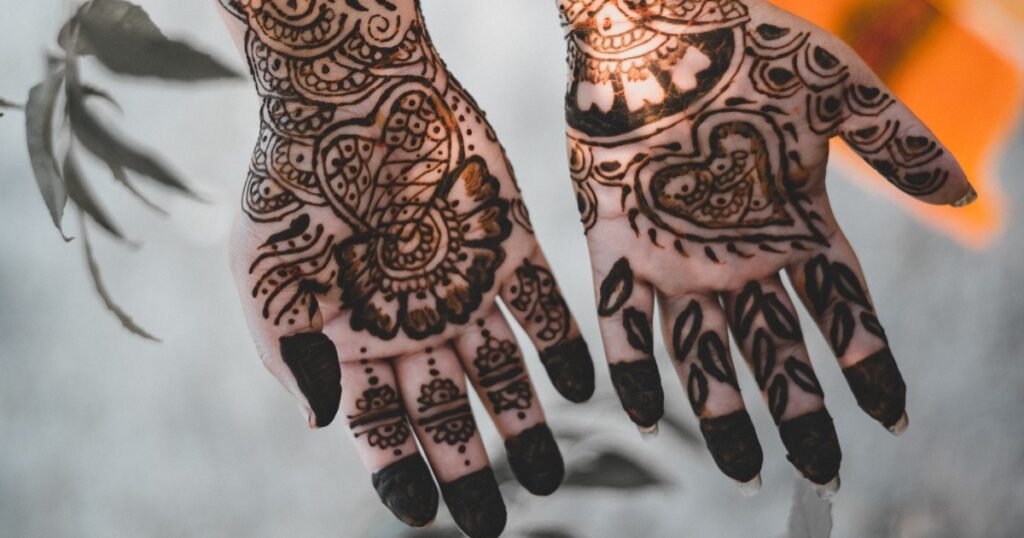
Henna is a well ingrained tradition in Morocco. Henna is applied on the body to beautify it for special events such as weddings and festivals.
Specific instruments are required to create attractive and detailed patterns. Henna cones are little tubes filled with a paste produced from dried henna leaves, and kohl sticks are used to outline the pattern. Furthermore, numerous applicators are utilized to draw thin lines and fill in large parts of the design.
To make more complex designs on the skin, tools such as a toothpick or tweezers may be utilized. Moroccan ladies may use these instruments to make magnificent body art that has been handed down through centuries.
Henna Tattoos Diy
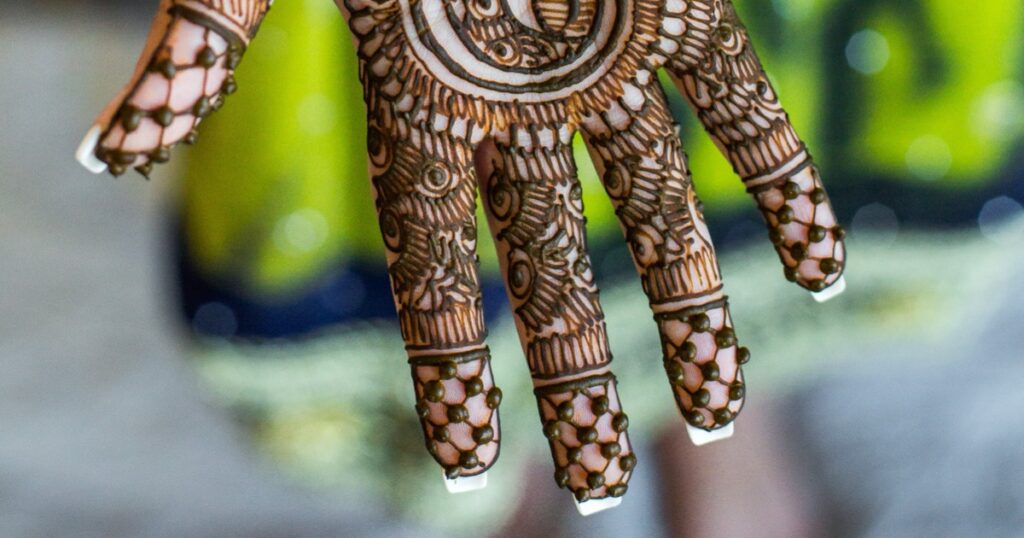
DIY henna tattoos may be a creative and entertaining way to express yourself.
There’s no need to see a professional henna artist when you can make your own lovely henna patterns at home.
You can create gorgeous patterns that can last anywhere from two weeks to two months with only a few ingredients, some experience, and a little patience.
Henna is an excellent method to explore with body art without committing to a tattoo.
Furthermore, it is simple to personalize and have fun with your design.
Why not give it a shot?
Moroccan Henna Customs
Henna is a vital element of many Moroccan rituals, for both the living and the dead. It is used to commemorate key life events such as weddings and birthdays.
Henna may also be used to remember loved ones who have passed away or to mark important events. Hennaed hands often include elaborate patterns that are supposed to bring good energy and blessings into the wearer’s life.
The henna paste is prepared from dried leaves of the Lawsonia inermis plant, which is native to North Africa, Asia, and Europe. The deeper the color of henna, the greater its capacity to bring luck and benefits into a person’s life.
This cultural custom has been handed down through centuries in Morocco and is still an important component of daily life today.
Moroccan Henna Styles by Region
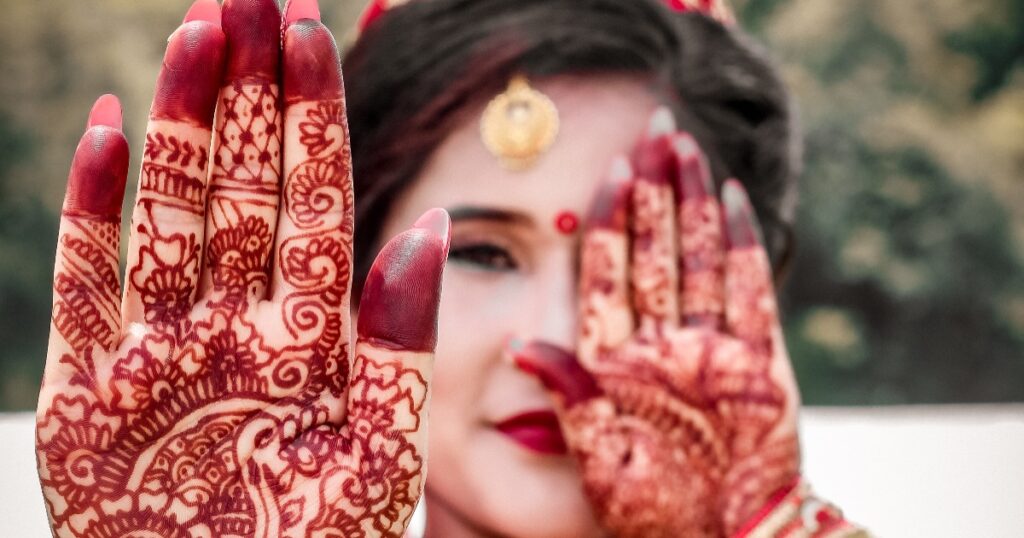
Moroccan henna styles are defined by more than just tradition. Regional influences also impact the kind of patterns utilized in henna painting.
Floral patterns are widespread in northern locations such as Tangier and Tetouan, indicating the region’s strong Andalusian influences.
Geometric forms are more popular in Marrakech and Essaouira, whilst elaborate patterns and strong colors are preferred in Fes and Meknes.
Rabat’s henna style is unique from those of other cities owing to the usage of intricate filigree motifs.
Regardless of area, Moroccan women continue to proudly flaunt their distinctive henna creations.
Henna in the Fes or Fassi Style
The Fes or Fassi type of henna is a traditional and popular pattern that originated in the Moroccan city of Fez.
It is more detailed than other types of Moroccan henna, with exquisite designs that include delicate lines and curves.
Women usually paint their hands and feet in this technique for special events like weddings and religious festivals, creating a stunning contrast between the dark brown henna dye and their light skin.
The application of Fes-style henna is a significant component of Moroccan culture, representing pleasure, celebration, and tradition.
Henna in Marrakech or Marrakechi Style
The Fes or Fassi Style Henna is well-known for its elaborate designs and bright colors.
Let’s look at the Marrakech or Marrakechi Style Henna now.
This henna technique offers a separate collection of designs that are not as detailed as the Fes style.
This style’s hues are often earthy tones like browns and oranges, giving it a rustic vibe.
In contrast to the Fes style, Marrakech henna often incorporates Arabic letters and phrases for an added sense of history.
Henna Designs From Meknes Or Meknessi
Meknes, Morocco, has its own particular henna techniques and customs. Meknessi henna patterns, which originate in the Fès-Meknès area, often include elaborate geometric forms as well as themes influenced by nature and Islamic art.
These patterns are customarily applied to brides before they participate in the traditional seven-step ritual. Richly painted hands often represent riches and power, a concept that is still valued in current Meknessi culture.
The henna utilized in these works is prepared from organic elements like as dried flowers, crushed leaves, and essential oils, which are said to bring good fortune to individuals who wear it. Wearing Meknessi henna is therefore considered as a show of respect for tradition, loyalty to one’s heritage, and joy in life.
Henna Designs in the Sahara or Saharawi Style
The Sahara or Saharawi henna style is a distinct and historical heritage handed down through generations of Moroccan families.
It is distinguished by detailed, complicated designs that often include interwoven geometric forms and motifs.
This sort of design is generally created using black henna, which is said to have more protective effects than red or orange-based henna.
This kind of design is most typically seen at weddings and religious festivals, when its beauty and meaning are guaranteed to be appreciated.
Because of its profound cultural importance, the Sahara or Saharawi style is a significant component of Moroccan culture and tradition.
Moroccan Wedding Henna
This form of henna is usually utilized for events such as weddings and festivities, transitioning from the Sahara or Saharawi form Henna Designs.
It allows the bride to feel more unique on her wedding day by having exquisite patterns made on her hands and feet.
In order to produce something special for the bride, the henna artist must have patience, ability, and understanding of traditional patterns.
Bridal henna is often composed of intricate flower designs that may feature fertility, love, and health motifs.
When it comes to wedding henna, each area has its unique customs, which adds to the experience.
For example, in certain locations, the wedding pair would wear matching henna patterns, whilst in others, the bride may wear a single design.
Bridal henna, regardless of tradition, is a vital aspect of a Moroccan wedding that adds beauty and pleasure to the event.
Henna Designs in the Gulf or Khaleeji Style
Gulf or Khaleeji henna patterns are popular in several Middle Eastern and North African nations.
This henna technique originated in the Arabian Gulf and incorporates elaborate floral designs and geometric patterns.
The patterns are often applied in an organic manner throughout the hands and arms, leaving no flesh unaffected by henna.
This traditional henna design is viewed as a symbol of beauty and femininity, and brides often wear it during wedding rituals.
Specific components, like as stars or moons, are often inserted to offer the wearer luck and benefits.
While each design has its own distinct traits, they all have one thing in common: they all symbolize traditional values and culture.
Black Henna Should Be Avoided
When it comes to Moroccan henna styles and customs, there is one word of caution: black henna!
Black henna, on the other hand, is not safe and natural. It often includes PPD (para-phenylenediamine), a chemical that may cause severe skin reactions, scarring, and even blindness.
Indeed, the FDA has issued a warning against using PPD-containing products. As a result, while choosing a Moroccan henna design, it is essential to ensure that only natural henna powder is used for safety and wellness.
Questions and Answers
Henna is a traditional Moroccan art technique that has been performed for millennia. It is derived from the Henna plant and includes the application of elaborate drawings to the skin using a paste prepared from the plant’s leaves. Henna is beloved among both men and women because it symbolizes beauty, good fortune, pleasure, and protection. Henna is often used for important events such as weddings and births.
How long does Moroccan henna paste last? This is a frequently asked topic concerning Moroccan henna styles and customs. In general, the length of henna depends on its application and the style of design utilized, but it normally lasts between two weeks and one month. Some patterns may endure up to three months if properly cared for and maintained.
Where can you get henna materials is another commonly asked topic. Fortunately, there are several locations around Morocco where you may get henna products like as cones, powders, natural oils, and more.
As with any art form, understanding Moroccan henna techniques and traditions is essential for producing stunning and distinctive patterns that stand out from the crowd.
Conclusion
I hope that this post has provided you with an insight of Moroccan henna styles and customs.
For generations, Moroccans have employed complicated patterns, materials, and procedures to produce stunning henna tattoos.
I strongly advise you to investigate and learn more about this old art style.
There is something for everyone, from wedding henna to Gulf style designs.
But keep in mind that when it comes to henna, safety should always come first.
If you decide to attempt a DIY design or hire an artist, make sure you choose a safe product with natural components.
Have fun creating your own unique henna masterpiece while keeping these suggestions in mind!
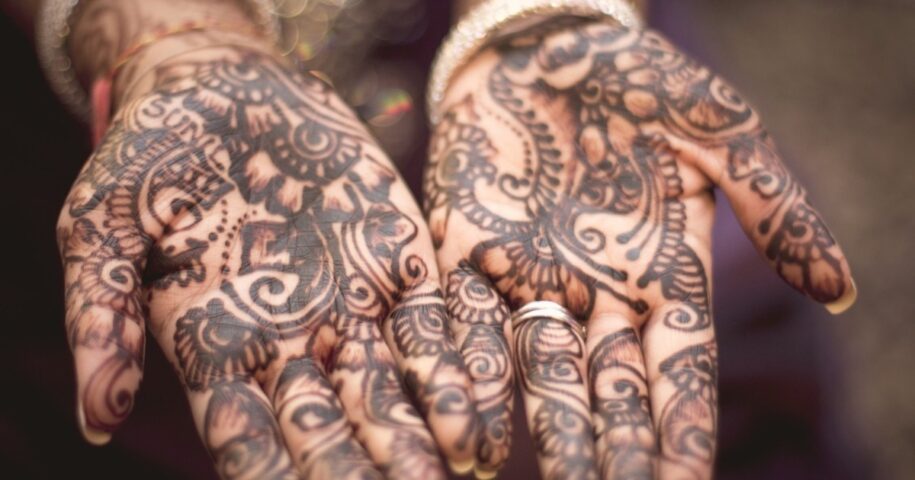
Leave a Reply